Athletes might go on to become famous, household names. However, we often forget that they are human beings like the rest of us. They might be more muscular or fit than most of us, but they are still humans with real problems. In fact, some have sicknesses that have plagued them for a long time. What are some of those rare illnesses that athletes dealt with? Well, that is what this article is all about.
For some of them, the “rare illnesses” they had might not necessarily rare but were certainly unique for a famous athlete to have. Watching them, many of us could never tell they had a problem at all. However, while some had to end their career with a major diagnosis, others started their careers knowing they had something. In spite of everything, they all made an impact on their respective sport. Let’s take a deep dive into the rare illnesses that famous athletes suffered from.

Tim Howard
- Sport: Soccer
- Illness: Tourette Syndrome
Tim Howard is most known for being the goalkeeper for the United States Men’s Soccer Team. He also held the same role for the Manchester United and Everton Soccer clubs in the Premier League as well as the Colorado Rapids in the MLS. Yet well before he made his name in the world of soccer, Howard had been diagnosed with Tourette Syndrome. The issue affects everyone a bit differently, but every person who has it will have some form of movement and vocal tic. Many people are able to overcome some of their issues, especially vocal tics, with proper therapy with a psychologist.
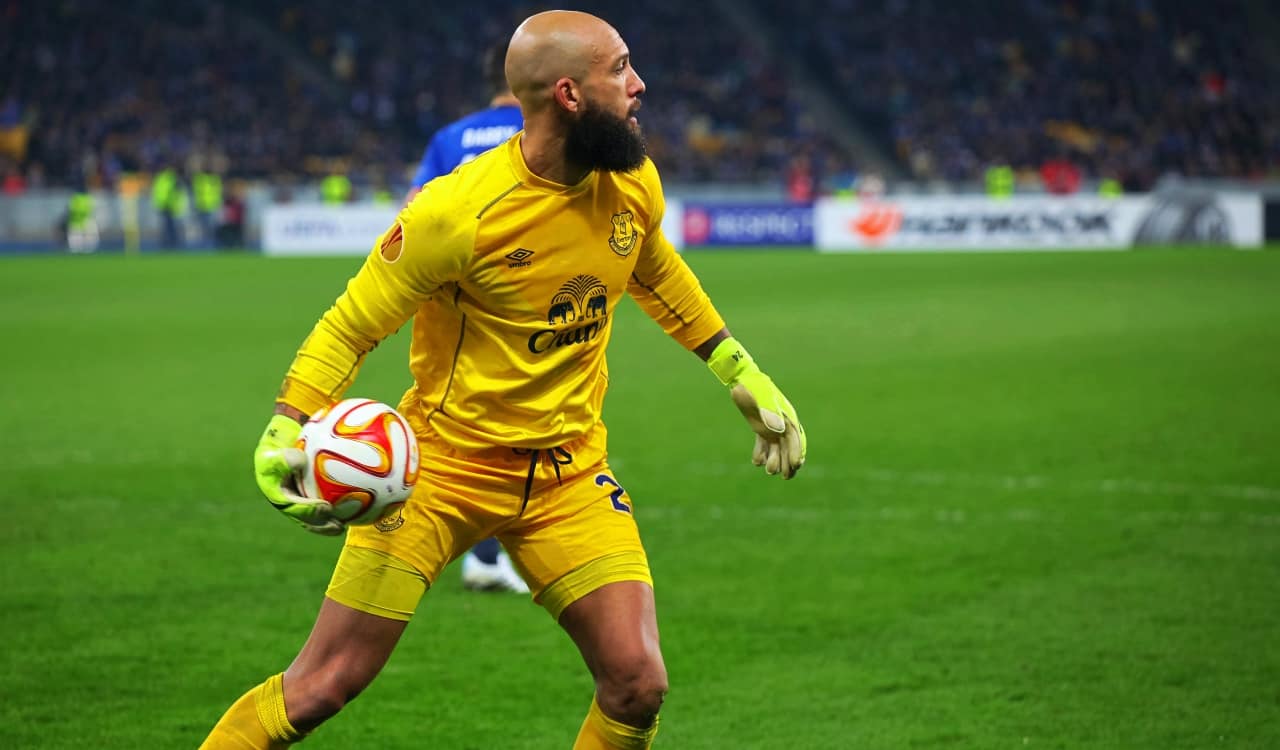
For some people, it is even hard to tell they have it at all. As common tics you might see could be random blinking, coughing, sniffing, or facial movements. Movements usually come after these tics occur but many are able to suppress them, temporarily at least. Sports can be a great way to keep one’s mind busy and tics can be lessened, which is likely why Howard got involved in soccer from an early age. Tourette’s is certainly one of the rare illnesses many athletes do not have, but Howard seems to do well with it.

Phil Mickelson
- Sport: Golf
- Illness: Psoriatic Arthritis
Golf is a sport that older men can play and have some pretty good success in. Compared to other sports, it is usually the easiest to play for a longer period of time too. This is why it would not shock people that a person with arthritis plays golf on the regular. Yet to be a professional player who often finishes in a high spot, is most certainly difficult. Phil Mickelson has managed to do this often. He has won 3 Master’s Titles and now 2 PGA Championships.

In fact, after winning the 2021 PGA Title, he is officially the oldest person to do it at 50 years old. You’d be forgiven for not knowing Phil deals with Psoriatic Arthritis. While those with the skin condition, Psoriasis, can get it, others can too. It comes with a lot of pain, stiffness, and swelling. All of which might randomly flare up or become regular problems. Most flare-ups will subside, but it might take a while. Rare illnesses like this can be tough, but Phil has managed to be wildly successful even still.

Scott Hamilton
- Sport: Figure Skating
- Illness: Congenital Brain Tumor
Most people know Scott Hamilton today from his broadcasting work for CBS and NBC as a commentator. Yet we also saw him as a member of the American Olympic broadcasting team, mostly for figure skating. He has been so terrific in that role due to his own wild success as a figure skater. He was a 4-time U.S. National Champion, 4-time World Champion and won the Olympic Gold Medal in the 1982-1983 Winter Games. Yet there is one thing you’ll likely notice right away about Hamilton; he’s small.

The reason for his small stature was found to have been a congenital brain tumor. The tumor caused a lot of problems that reduced nutrients and their impact on his body. Simply put, he stopped growing for a while. That caused him to reach a height of roughly 5 feet, 3 inches in the prime of his career with a lifetime peak height of 5 feet, 4 inches. This might be one of those odd rare illnesses, but funny enough, figure skating does not require a specific height to be great.

Phil Dalhausser
- Sport: Beach Volleyball
- Illness: Blood Clots
Phil Dalhausser was one of the best beach volleyball players in the world for many years in the doubles sector. Along with his former partner, Todd Rogers, he won the 2007 AVP Tour and FIVA World Championship. That led the two to compete at the 2008 Summer Olympics in Beijing, China. Overall, the two have won 3 Silver, 4 Bronze, and 4 Gold Medals while on World Tours together.
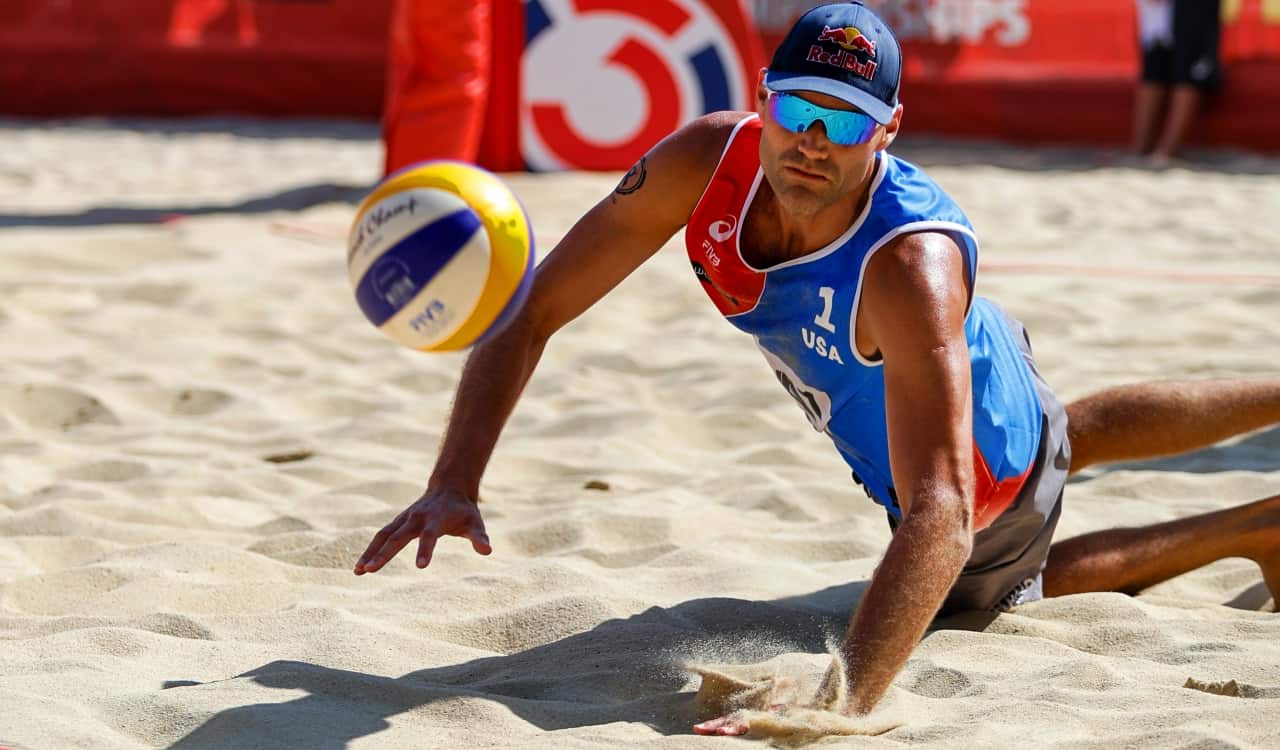
Yet just two months before the duo were set to defend their crown at the 2012 Summer Olympics in London, Dalhausser found out he had two blood clots in his left shoulder. This put him in the hospital for nearly a week. He only found out due to accompanying his wife, Jennifer, to a doctor’s appointment. She had the doctor also look at Phil, whose arm was incredibly swollen by that point. Phil would go on to compete in the 2012 and even 2016 Summer Olympics.

Carrie Johnson
- Sport: Sprint Canoer
- Illness: Crohn’s Disease
Carrie Johnson competed for Team USA at the Summer Olympics three times as a sprint canoer. She has competed as both an individual and in team events. She has never won an Olympic medal or major championship, but Johnson has often finished in the top ten to top five. While no one expected her to qualify for her first Olympic event, she actually ended up doing so for the 2004 Summer Olympics in Athens, Greece. Carrie was by far the youngest member of the team.

During her training for the summer games, she began experiencing major fatigue, weight loss, and even anemia. The problems caused her to be unable to train and she had no idea what could be going on. That was when doctors found that she has Crohn’s Disease. It can cause severe gastrointestinal issues as well as inflammation, tiredness, etc. It also makes one more open to getting other sicknesses. Carrie managed to overcome it and has been canoeing ever since.

Eric Berry
- Sport: American Football
- Illness: Hodgkin’s Lymphoma
Eric Berry was a tremendous collegiate player for the University of Tennessee, leading to two All-American selections and the 2008 SEC Defensive Player of the Year and 2009 Jim Thorpe awards. He has managed to continue that success in the NFL where he was a 5-time Pro Bowler, 3-time First-Team All-Pro selection, and the 2015 Comeback Player of the Year. During the height of his playing career, however, Berry found out that he had Hodgkin’s Lymphoma.

Diagnosed in December of 2014, Berry had to leave his team behind to immediately begin chemotherapy. Hodgkin’s is a type of cancer that specifically originates in a certain type of white blood cells called lymphocytes. There are many symptoms one might get with the disease but all will have enlarged lymph nodes. They might be in the neck, underarms, or groin. If caught early, most tend to survive, particularly younger people. Berry was a survivor and the quick chemotherapy move led to Eric returning for the 2015 NFL season.

Pat Summitt
- Sport: Basketball
- Illness: Alzheimer’s Disease
While most know Pat Summitt from her time coaching the University of Tennessee’s Lady Volunteers basketball team, she was actually a basketball player herself. She even competed in the 1976 Summer Olympics as the co-captain of the U.S. Women’s National Basketball Team. The team won a silver medal but she returned 8 years later as a head coach for the team, leading them to the Olympic Gold Medal. As a coach, she did it all honestly.

She took the Lady Vols to 16 SEC Championships, 18 Final Four appearances in the NCAA Women’s Basketball Tournament, and 8 National Championships. At the time of her retirement, she racked up 1,098, the most all-time when she left. Yet one reason she had to leave coaching behind was her bout with Alzheimer’s disease. Diagnosed in 2011, she coached through the remainder of the season. Summitt sadly passed in June 2016 from complications of the disease.

Peggy Fleming
- Sport: Figure Skating
- Illness: Breast Cancer
Peggy Fleming learned she wanted to be a figure skater quite young in life. She had a competitive drive that led her to want to become the best who ever put on a pair of ice skates. She made a solid case for herself, as she won three straight World Championships from 1966 to 1968. Although she competed in both the 1964 Winter Olympics in Austria and the 1968 Winter Olympics in Mexico City, it was the latter where she won an Olympic Gold Medal.

Sadly, she was diagnosed with breast cancer in 1998. While her figure skating career was over by then, Fleming was still quite visible in that world. Luckily, Fleming believed in regular check-ups which allowed her doctors to catch her cancer early. She then had surgery to remove the breast cancer and has been cancer-free ever since. Today, she is a big advocate for breast cancer awareness. Fleming can also be seen commentating on figure skating, which she’s been doing for over 20 years.

Isaiah Austin
- Sport: Basketball
- Illness: Marfan’s syndrome
Isaiah Austin was a top player in the college basketball territory for Baylor University. He was able to stand out as a pretty good player for the team and even managed to win the 2013 NIT Championship and was selected for the Big 12 All-Rookie Team and Third-Team All-Big 12. He declared for the NBA Draft that season but had to return due to a shoulder injury. His numbers only improved, landing him on the 2014 Big 12 All-Defensive Team. He would then declare for the 2014 NBA Draft.

Yet in June 2014, Austin learned he had Marfan’s Syndrome. A genetic disorder, it causes many to be tall and then with longer arms, fingers, etc. One is also over-flexible in their joints. Yet this can also cause heart problems, even a possible aortic aneurysm. Moreover, the lung, bones, eyes, and spinal cord can be affected. Austin’s case was mild and after two years, he was cleared to play basketball again. The NBA passed on him, as they do many with rare illnesses, but he has played overseas since 2017.

Dana Vollmer
- Sport: Swimming
- Illness: Supraventricular Tachycardia & Long QT Syndrome
We all know Dana Vollmer by now, as she has been an impressive swimmer for Team USA at 2004, 2012, and 2016 Summer Olympics. We’re expected to see her again in 2021. She was such a good swimmer that she made it to the Olympic trials in 2000 at just 12 years old. She did not make that team but did make the 2004 Olympic team. This was pretty compelling, as Vollmer underwent heart surgery in 2003 for a condition called supraventricular tachycardia. It causes people to have a pulse rate of 240 beats per minute. After that, her cardiologists found that she had Long QT Syndrome.

While further testing found that this might not be the case, she has to always have a defibrillator poolside when she swims for emergencies. She went on to win the Gold Medal in the 4×200-meter freestyle relay that set a world record at the 2004 Summer Games. Dana returned in 2012 to set another world record in the 100-meter butterfly and won a gold medal in the 4×100-meter medley relay and 4×200-meter freestyle relay. Then in the 2016 Summer Olympics, she won a Bronze, Silver, and Gold Medal. Overall, Vollmer has won 32 medals as a swimmer across multiple international competitions.
 Messi celebrates a goal at the La Liga match. Photo Credit: Christian Bertrand/Shutterstock
Messi celebrates a goal at the La Liga match. Photo Credit: Christian Bertrand/Shutterstock
Lionel Messi
- Sport: Soccer
- Illness: Idiopathic Short Stature
Lionel Messi will go down as one of the top five best soccer players to ever live when all is said and done. But before the Argentian made it to the top soccer stage, he was diagnosed with a growth hormone disorder. While referred to as idiopathic short stature, Messi’s condition goes beyond height issues. Messi found this out while trying to play for great Argentinian clubs like River Plate and Newell’s Old Boys. Messi’s family could not pay for the $900 monthly expenses to help his condition. That meant the clubs would have to do so. Messi was a promising young player, which FC Barcelona saw.

Though Messi had one of the rare illnesses that could hurt him in other sports, perhaps it would not in soccer. Based on his high potential, Barcelona signed Messi. They agreed to a contract on a napkin and they even paid for his hormone treatments. Just 13 years old at the time, he would undergo HGH treatments to help his disorder, which he stopped doing by adulthood. Messi would later become an FC Barcelona icon, helping the team win 4 UEFA Champions League Trophies, 7 Copa del Rey Titles, and 10 La Liga Titles. Oh yeah, and he’s scored more than 750 goals.

Lance Armstrong
- Sport: Road Race Cycling/Cycling
- Illness: Testicular Cancer
Lance Armstrong is most known for being one of the most successful cyclists in history. He won seven consecutive Tour de France races from 1999 to 2005. This made him well-known in the sports world when road race cycling was by no means something to care about. What also landed him in the news was a doping scandal where it was found Armstrong used steroids during his race career, causing him to be stripped of all his Tour de France titles. Another major thing Lance dealt with, however, was testicular cancer.

This was actually something that came before his major cycling wins. At just 25 years old, in October of 1996, he found out he had stage three testicular cancer. His cancer had even spread to his lymph nodes, lungs, brain, and abdomen. While Armstrong did have an operation to remove the cancerous testicle, doctors were not sure if his cancer would go away. Armstrong had to do a lot of treatment, with several medications involved on top of normal chemotherapy. Yet he came out on top, then went on to cycling success – even if he did need “some” help to do it.

Caster Semenya
- Sport: Distance Running/Track
- Illness: 46 XY DSD
Caster Semenya has experienced a lot of problems in the sports world. She has dealt with people thinking she is a trans-woman as well as having governing bodies in sports trying to ban her. Why? Caster was born with XY Chromosomes. Her condition is surely one of the rare illnesses that the sports world has trouble grasping. Officially called “46 XY DSD,” her condition gives the presence of a Y chromosome which causes testicles to form. Officially, this results in higher levels of testosterone. Semenya’s condition gives what might be normal male T-Levels, which violates female competition rules.

Caster was born intersex but was assigned “female” at birth, so she developed both male and female organs in her life. That makes her naturally have regular hormone growth but as both sexes. She went to battle with the International Association of Athletics Federations who ruled that she must undergo medical treatment to lower her testosterone to compete in future events. The decision was universally criticized and is currently being challenged by Caster with the European Court of Human Rights. Of course, all of this happened after she won two Olympic Gold Medals and three World Championships in the 800m race.

Roman Reigns
- Sport: Football & Professional Wrestling
- Illness: Leukemia
Roman Reigns is a multi-time World Champion in the WWE who has competed in several main events at WrestleMania. Yet before he jumped into pro-wrestling, he was a football star for Georgia Tech University on defense. When he could not seem to land on an NFL or CFL team long-term, he gave pro-wrestling a crack. Considering most of his family wrestled, many being legends in the business, it only made sense. However, one thing was never known to the public during all of this.

Roman Reigns, real name Joe Anoa’i, has leukemia. He initially battled it in his late teen years and it thankfully went into remission. While one cannot technically get rid of rare illnesses like leukemia, due to it being a blood cancer, you can better the condition and send it into remission. Reigns did not have an issue with it for 11 years, then in 2018, he had to walk away from the WWE for a while when it returned. Roman would luckily beat it and managed to go into remission once again, then made his return to WWE in 2019. He has been in remission ever since. Rare illnesses like this can be hard to beat.

Arthur Ashe
- Sport: Tennis
- Illness: HIV/AIDs
When Arthur Ashe was active in the tennis world, he was as dominant as one could hope to be. A black man, he was active during the height of the Civil Rights era. This made him disliked by some simply for the color of his skin. Yet he did not care and pressed on, winning three Grand Slam singles titles. To this day, he is the only black man to have won a singles title at Wimbledon, the U.S. Open, and the Australian Open. Ashe retired from tennis in 1980, but his time in the spotlight wasn’t over. In 1983, Arthur had to get a blood transfusion when he underwent a heart bypass surgery.

Yet the blood had been taken from a person with HIV. This resulted in Ashe contracting HIV, which was one of the rare illnesses of its time that most assumed only gay men could contract. He did not publicly announce his HIV/AIDs battle until 1992, but he began to work to educate others about it. That was when he opened the now storied Arthur Ashe Foundation. Ashe sadly passed in February of 1993 from Aids-related pneumonia. However, would be awarded the Presidential Medal of Freedom posthumously by President Clinton later that year, in June of 1993.
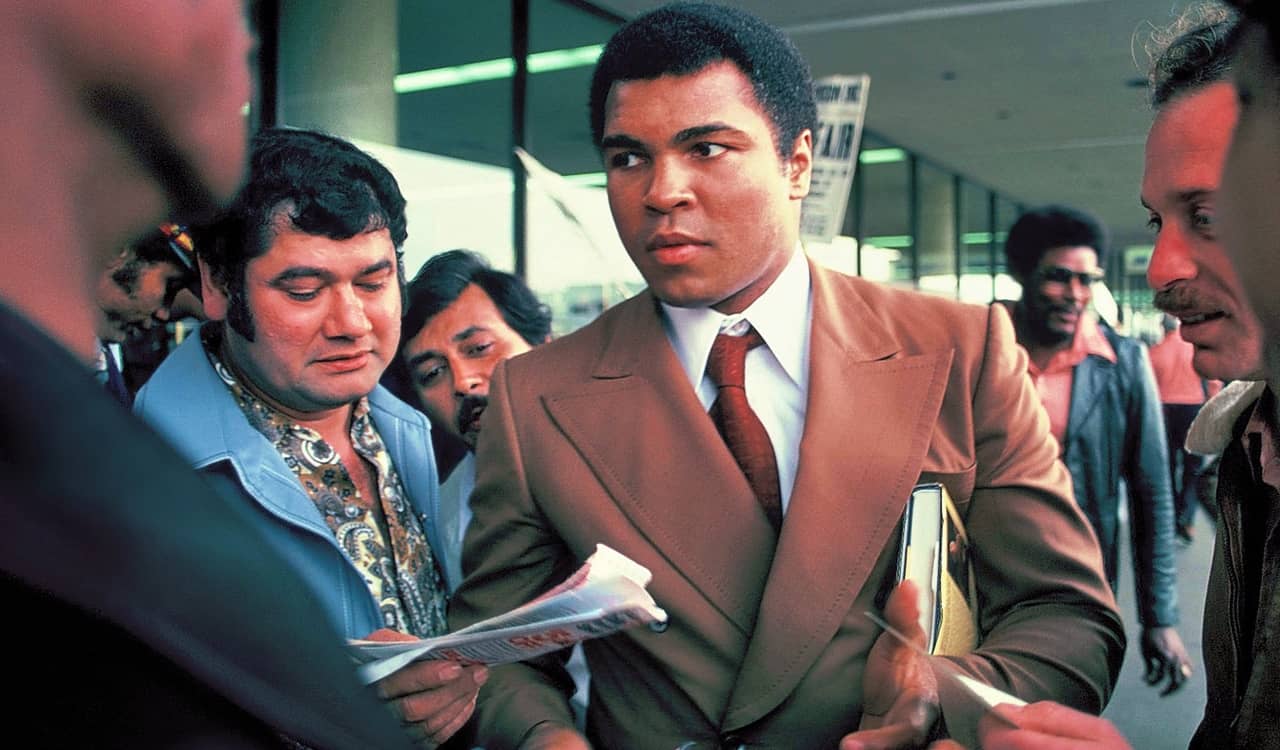
Muhammad Ali
- Sport: Boxing
- Illness: Parkinson’s Disease
Last name “Ever,” first name “Greatest,” that is how we know Muhammad Ali today. Most believe he was the best boxer to ever live, and it’s not hard to see why. He defeated the best boxers of his time, including the likes of Leon Spinks, George Foreman, Joe Frazier, Floyd Patterson, Sonny Liston, Bob Foster, and Ken Norton. All the way to becoming a 3-time Heavyweight Champion and Olympic Gold Medalist. Yet Ali, like many boxers, was affected by all those repeated shots to the head.

While some turn out fine, others can develop early dementia, Alzheimer’s disease, and even Parkinson’s Disease. Ali would be affected by Parkinson’s, but doctors are not sure if he was simply fated to one day have it or if his boxing career had an effect on this. Parkinson’s can be tough to live with for many. It affects the nervous system, causing involuntary movement or even major stiffness. While issues develop gradually, they can become worse over time. Speech can be affected as well. We now have treatment for the disease, which has proven to reduce symptoms as well as surgeries too.

Martina Navratilova
- Sport: Tennis
- Illness: Breast Cancer
Martina Navratilova is one of the greatest tennis players in history, man or woman. She has a total of 18 Grand Slam singles titles. That is on top of 31 major women’s doubles titles and 10 major mixed doubles titles. That gives her 59 major titles, the most in the “Open Era.” She also managed to reach the Wimbledon singles final 12 times, that is including 9 straight years from 1982 to 1990. Martina also won at Wimbledon 9 times, the most all-time, including 6 straight. Navratilova held the world’s number one ranking for 332 straight weeks, a record. But she eventually had a new opponent to defeat, breast cancer.

While it might not be one of the rare illnesses of our time, it is certainly pretty rare to see in the world of tennis for someone still pretty active in that world. While she retired from professional play in 2006, she was still coaching many pros and playing on her own. In April of 2010, Martina announced that she had been diagnosed with breast cancer. It was found that January that she had ductal carcinoma in situ in her left breast. She had the tumor removed in March, then did radiation therapy in May of that year. Martina has been cancer-free ever since.
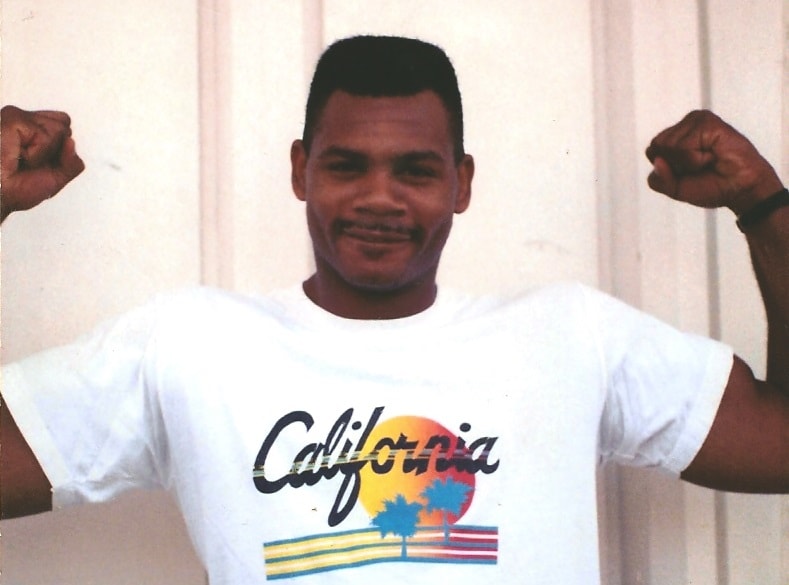
Hank Gathers
- Sport: Basketball
- Illness: Hypertrophic Cardiomyopathy
Hank Gathers was considered to be a sure thing when it came to being drafted to an NBA team. As a member of the basketball team at the University of Southern California (USC) and then Loyola Marymount University, he was a star in the late 1980s. He was a Second-Team All-American in 1990, Third-Team All-American in 1989, and 3x First-Team All-WCC from 1988 to 1990. On top of that, he led the NCAA in scoring and rebounding as well as became the WCC Player of the Year in 1989. Sadly, in his Senior season (1989-1990), he was diagnosed with an abnormal heartbeat when he collapsed during a game.

Although he was on medication afterward, it affected his play, making doctors gradually decrease the dosage. Yet during the 1990 WCC Tournament, he collapsed again, this time dying at the age of 23. It was eventually discovered Gathers had hypertrophic cardiomyopathy. A condition when the heart becomes abnormally thick, which makes it harder for it to pump blood through the body. Of course, in Gathers’ case, when examined, the coroner found no trace of heart medication. This means he likely stopped taking the medicine that would likely have kept him from dying.

Rob Long
- Sport: Football
- Illness: Brain Cancer
Rob Long had been playing football for a long time. He made it to Syracuse University where he was earning a great degree, all while being a certain NFL prospect. His Junior and Senior years at the university were great for him. He became a Ray Guy Trophy semifinalist as a Junior and was an All-Big East First-Team selection. He would be selected to the All-Big East First-Team as a Senior too and averaged 43.8 yards per punt, still a Syracuse record. But in 2010, his world crashed all around him. Long told the Syracuse staff he was having headaches for several weeks, causing them to schedule an MRI that December.

It revealed a tumor that would require immediate surgery to remove. This meant he could not play in the 2010 New Era Pinstripe Bowl, but his life could be saved. One of the rare illnesses you expect to see, he had no choice. While the tumor was removed, malignant cells remained, causing the need for more treatment of his brain cancer. He was eventually cancer-free but his NFL hopes were dashed. Yet Rob joined “Uplifting Athletes” in 2016 as Director of Rare Disease Engagement and became Executive Director in 2018. He wants to help people who are going through similar issues he himself dealt with.

Rafael Nadal
- Sport: Tennis
- Illness: Facet Syndrome
Rafael Nadal is one of the greatest tennis players ever, and he’s still active. His career is filled with accomplishments, including 20 Grand Slam titles as of this writing (tied for most all-time). Nadal also has 36 ATP men’s singles titles (also tied for most all-time). In total, he is a 13-time French Open Champion, 2-time Wimbledon Champion, and a 4-time U.S. Open Champion. Nadal is considered “the master of clay.” He won 81 consecutive tennis matches on the surface, the most in the Open Era.

All of this is made even more impressive when you know he did it all in some pretty bad pain. Nadal deals with facet syndrome. It is a condition that affects the facet joints, causing pain. While the pain can be intense, it does not technically cause movement issues. It simply puts one in pain when they move in a specific way or in a specific location. Nadal is a healthy guy, so it appears he may have it due to a previous injury or it was hereditary. Rare illnesses like this can have many reasons for starting up.

Ervin “Magic” Johnson
- Sport: Basketball
- Illness: HIV/AIDs
Magic Johnson is one of the greatest point guards in NBA history. He was actually in the prime of his career when he walked away from basketball. He was a 12-time NBA All-Star, 9-time All-NBA First Team selection, and 3-time NBA MVP. Magic led the league in steals twice and assists four times. Not to mention 9 NBA Finals appearances with 5 NBA Championship wins. Yet he did all of this by his early 30s. During a normal physical before the 1991-1992 season, Johnson tested positive for HIV. Magic announced that he had HIV in November of 1991 and claimed he would retire immediately.
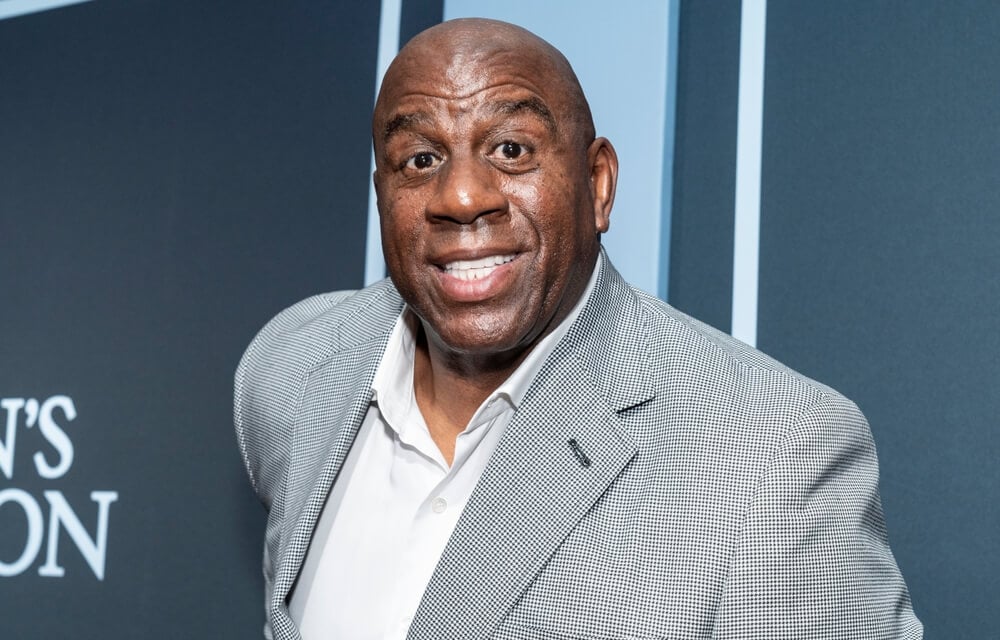
Very little was known about HIV/AIDs at the time, but it was thought that only gay men to have it. Magic was not gay or bisexual, so when he contracted it, the world began to look at the disease very differently. Still among the rare illnesses of the time, no one knew if Magic would live much longer. He did return to play a small spell in the NBA before retiring again, but he ended up being lucky enough to be just HIV positive without the AIDS virus coming through. Major advancements in medication in the 1990s and 2000s for HIV/AIDs have allowed Magic to be with us today.

Venus Williams
- Sport: Tennis
- Illness: Sjögren’s Syndrome
No one could have ever assumed Venus Williams was sick, because you cannot see what she has. Originally scheduled to compete in the 2011 Rogers Cup, Williams had to withdraw due to an illness. She found out soon after that she has an autoimmune disease called Sjögren’s Syndrome. It caused one to have fatigue issues as well as muscle and joint pain. On top of the autoimmune issue itself, which is a problem with one’s immune system where you can get sick easier.

Venus has continued to play singles and doubles tournaments in tennis in spite of having one of the rare illnesses in sports today. In singles, she is a 2-time Australian Open Champ, 2-time U.S. Open Champ, and 4-time Wimbledon Champ. In doubles with her sister Serena, Venus is a 6-time Wimbledon Champion, 4-time Australian Open Champion, 2-time U.S. Open Champion, and 2-time French Open Champion. Venus has not let her condition stop her from playing, which is admirable.

Kareem Abdul-Jabbar
- Sport: Basketball
- Illness: Chronic Myeloid Leukemia
Kareem Abdul-Jabbar is a 19-time NBA All-Star, 6-time NBA MVP, and 6-time NBA Champion. He also, as of this writing, scored the most total points in NBA history. The man played around 20 years as a 7-foot center, which is unheard of for most big men even in modern-day play. Yet he has been dealing with something many people never knew, leukemia. This blood cancer is known for being tough on many people. Thankfully, a lot of people are able to go into remission for a long time.

Kareem made the announcement in 2009 that he had a version known as chronic myeloid leukemia. This is actually a type that affects not only the blood but also bone marrow too. Although he was diagnosed in late 2008, he did not announce it until later as he wanted to keep things quiet. He does see a specialist quite often to check on his blood and feels his disease won’t keep him from having a normal life. Kareem has even become a spokesperson for Novartis, a cancer medication company.
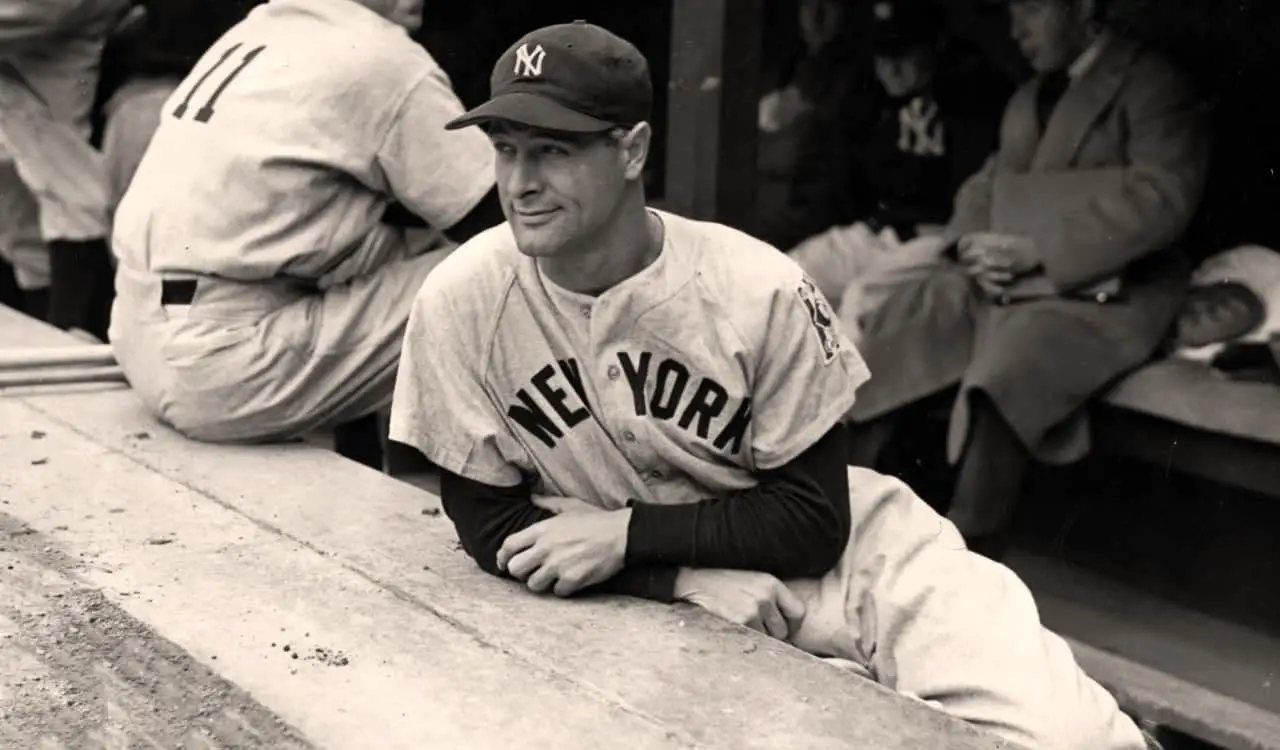
Lou Gehrig
- Sport: Baseball
- Illness: Amyotrophic Later Sclerosis (ALS)
Lou Gehrig was an amazing baseball player who accomplished all one could ever hope. He was a 7-time All-Star, 2-time AL MVP, and 6-time World Series Champion. He also led the American League in Home Runs three times, RBIs five times, and was even the 1934 AL Batting Champion. In spite of all of these accomplishments, Lou Gehrig today is often known for his medical condition, amyotrophic later sclerosis. Most people know it today simply as ALS, which forced Gehrig to retire at just 36. Gehrig notably took himself out of the lineup on May 2, 1939, to end his remarkable 2,130 game streak.
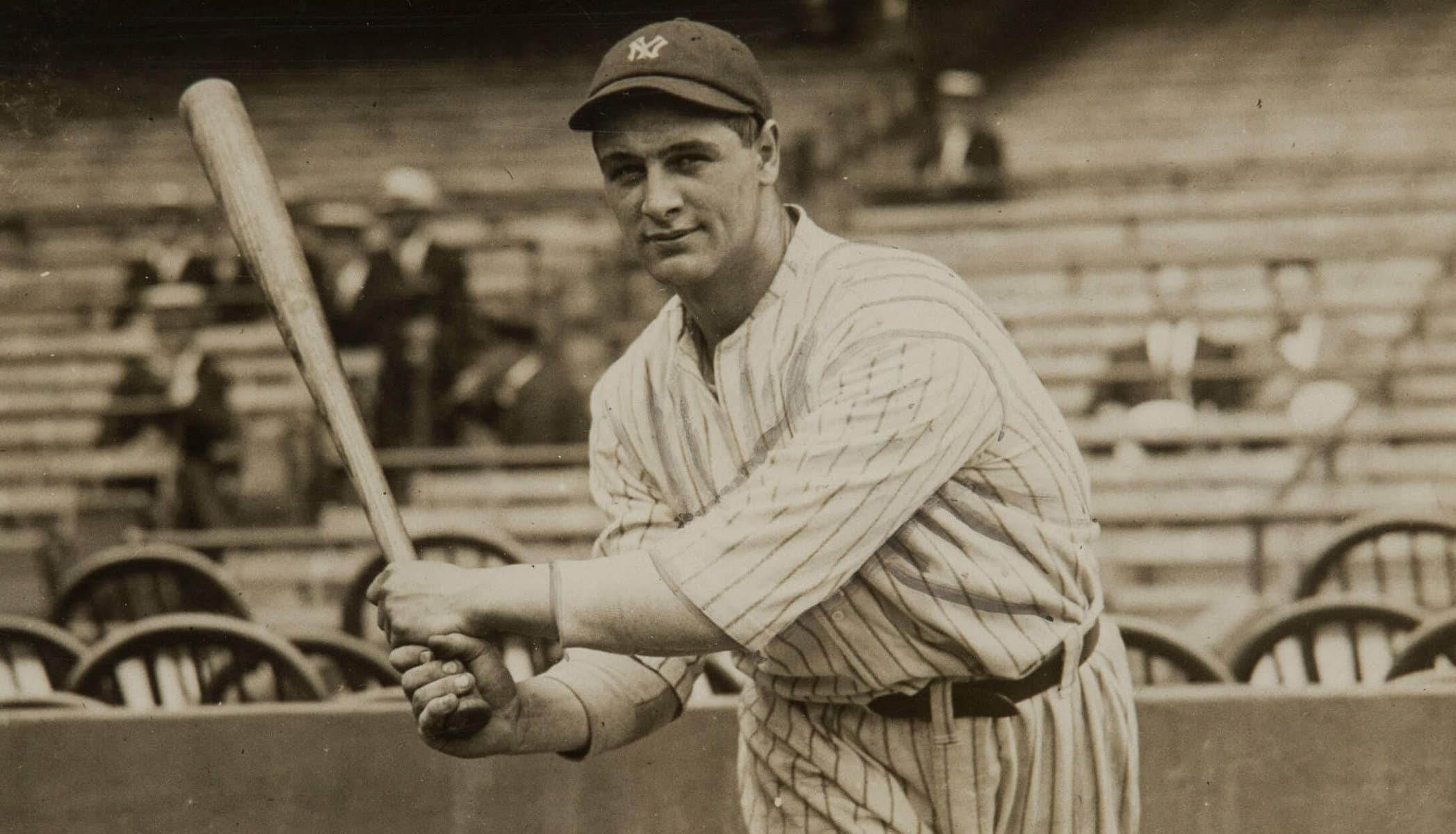
He had been dealing with problems related to his then undiagnosed disease. People did not know much about ALS at the time and it was one of the rare illnesses that most people in sports had never even heard of. We often called the disease “Lou Gehrig’s Disease” simply for the fact that he was the first to truly bring any attention to ALS. It is a neurodegenerative, neuromuscular disease that causes one to progressively lose motor neurons and control voluntary muscles. Eventually killing those with it. Gehrig left the game he loved, notably saying he was “the luckiest man on the face of the Earth.”

Wilma Rudolph
- Sport: Sprinter/Track
- Illness: Polio
The story of Wilma Rudolph needs to be made into a movie with high production value. Her picture should be in the dictionary under the word “perseverance.” She never let anything stop her, including the Polio disease. Get this, Wilma was a sickly child and sadly ended up getting polio as a result. Today, we get vaccinations to prevent polio but in the early 1900s, it had yet to exist. One of the rare illnesses seen today, polio can affect the central nervous system, paralyzing those with it. Others have major fatigue and weakness while some see no issues at all from it.
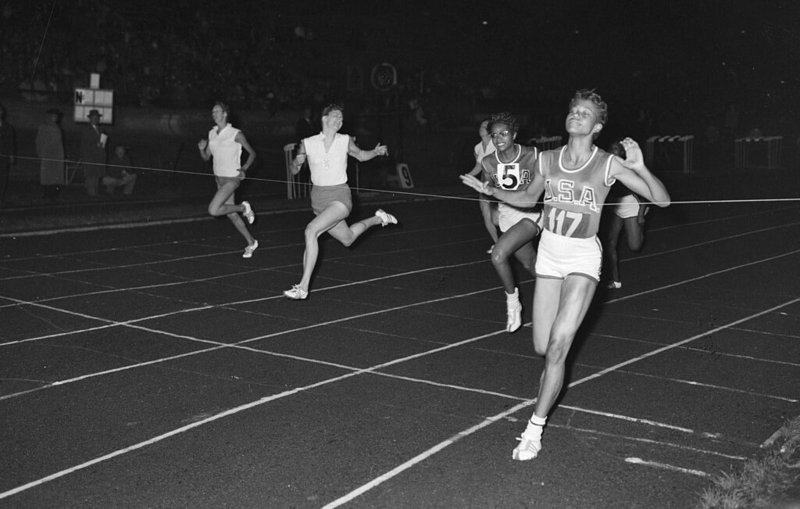
Rudolph, however, did become paralyzed from it. Yet she did not let her stop her as she worked her way back to being able to walk again, then run. She became such a good runner that she qualified for the Olympics. She competed in both the 1956 and 1960 Summer Games. Wilma captured a bronze medal in the 4×100-meter relay in 1956. Then in 1960, she won 3 Gold Medals in the 100m, 200m, and 4×100-meter relay races. On top of that, she set a then-world record in her 200m race. Making her known as the “Fastest Woman Alive.”
